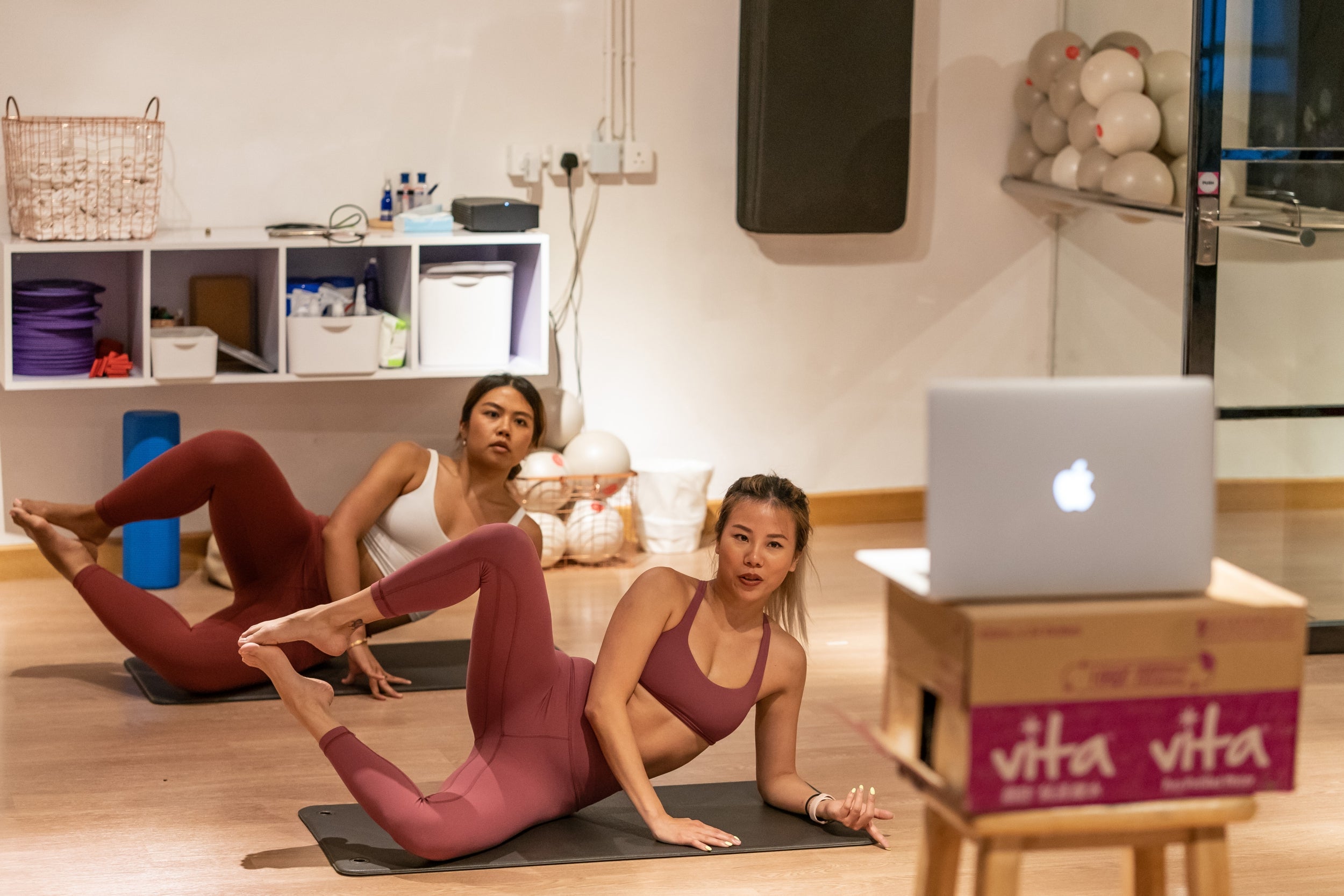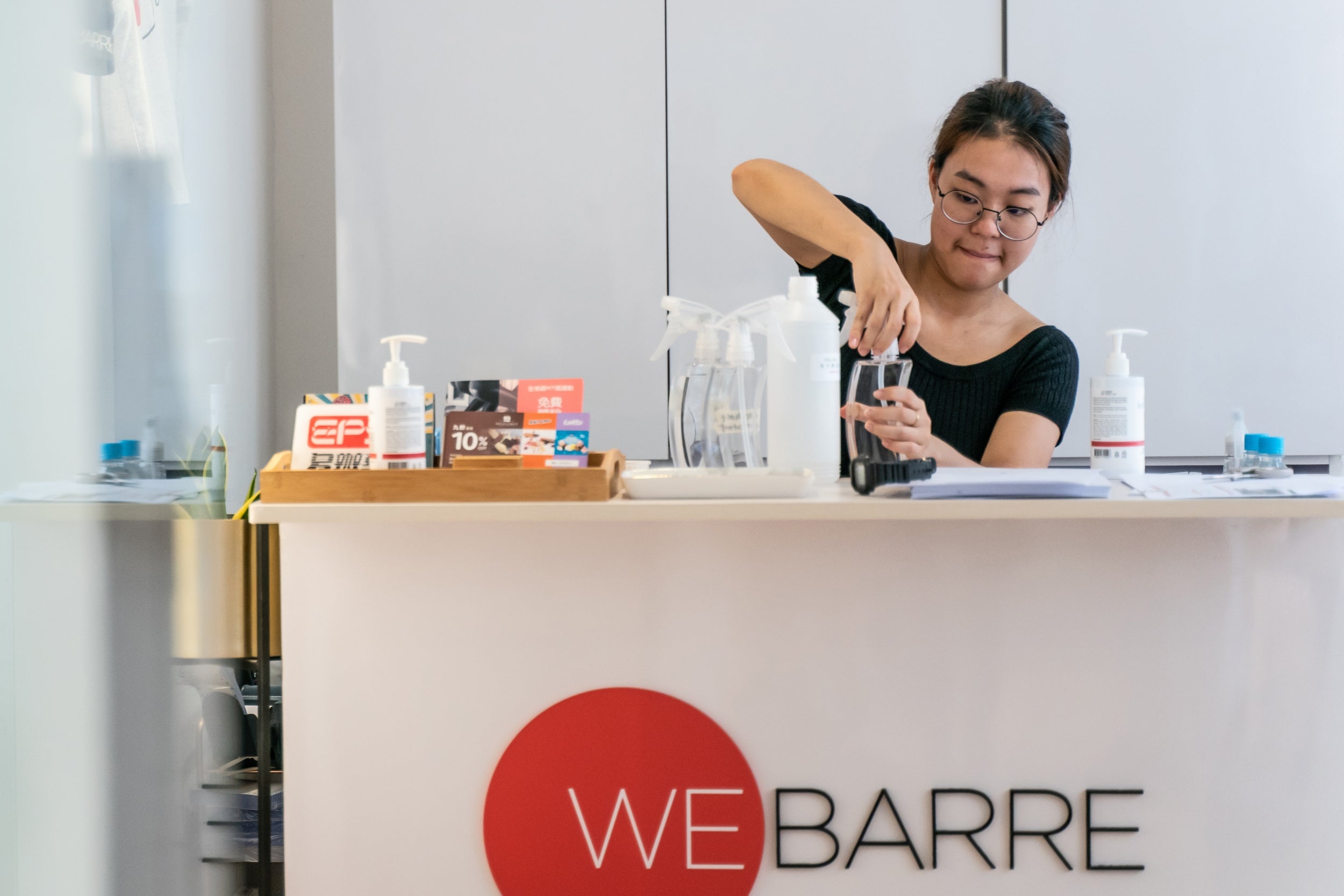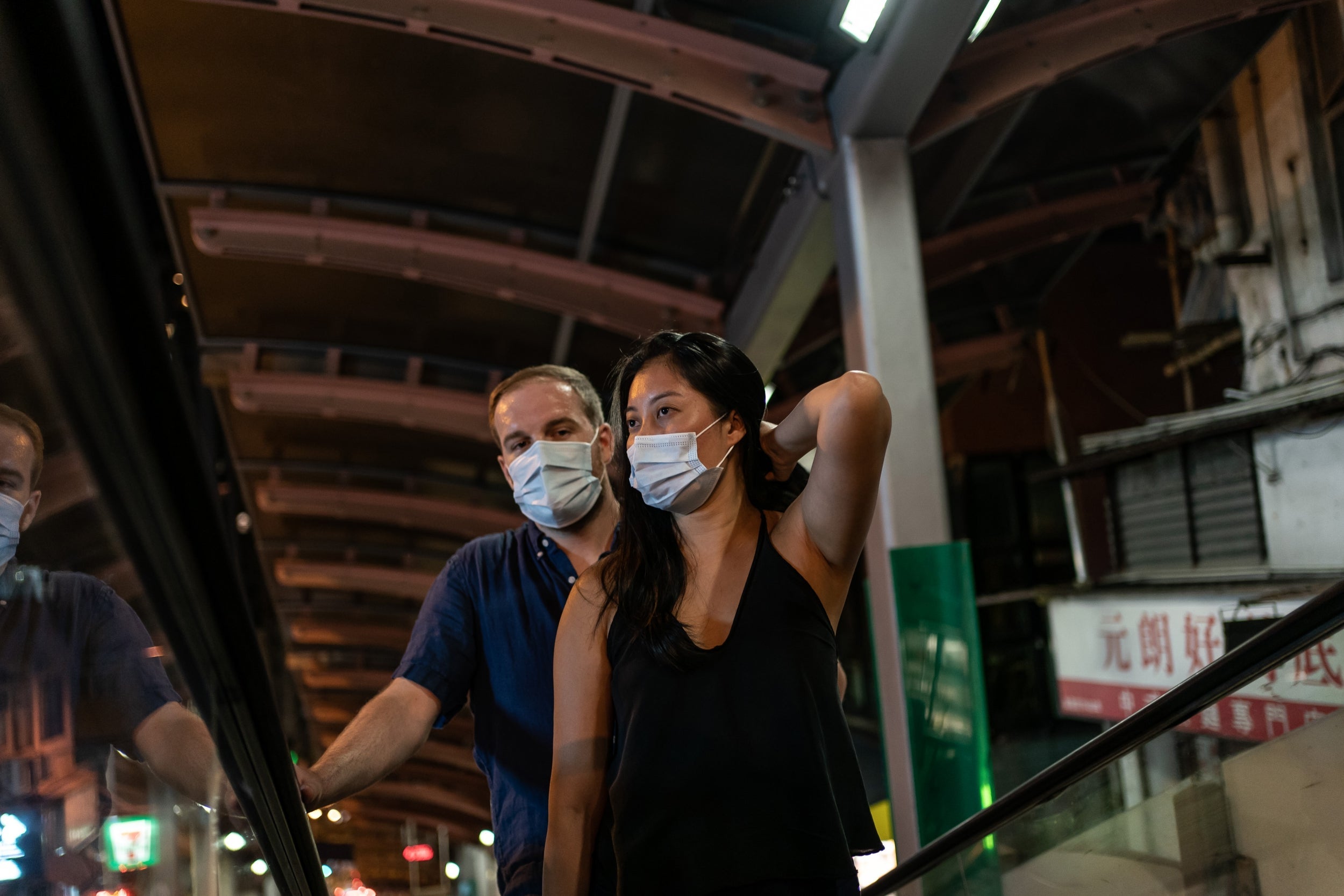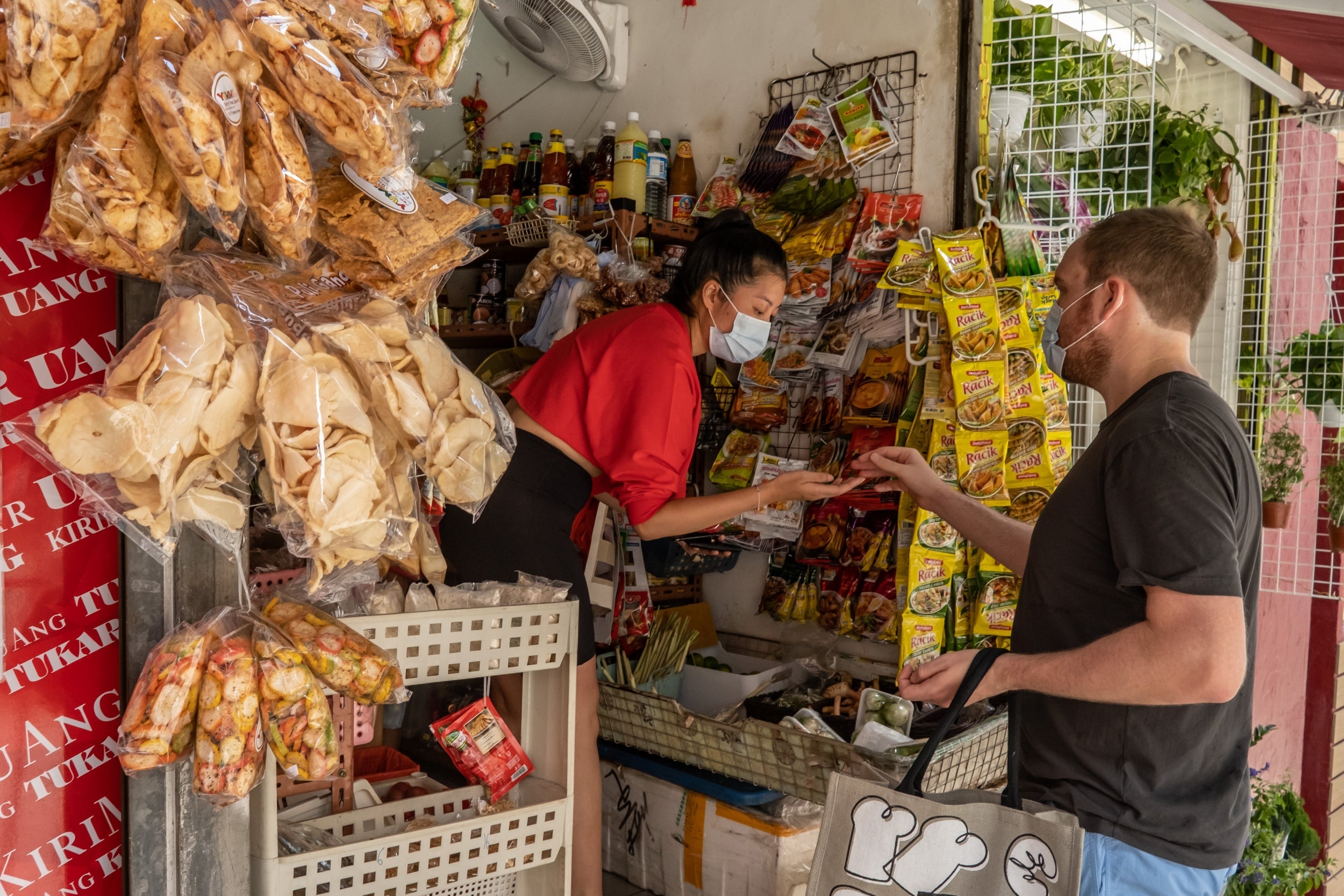What is it like drinking and exercising in Hong Kong’s ‘new normal’?
As the country prepares to return to the way life was pre-pandemic, can such a thing really happen so soon, asks Shibani Mahtani

Your support helps us to tell the story
From reproductive rights to climate change to Big Tech, The Independent is on the ground when the story is developing. Whether it's investigating the financials of Elon Musk's pro-Trump PAC or producing our latest documentary, 'The A Word', which shines a light on the American women fighting for reproductive rights, we know how important it is to parse out the facts from the messaging.
At such a critical moment in US history, we need reporters on the ground. Your donation allows us to keep sending journalists to speak to both sides of the story.
The Independent is trusted by Americans across the entire political spectrum. And unlike many other quality news outlets, we choose not to lock Americans out of our reporting and analysis with paywalls. We believe quality journalism should be available to everyone, paid for by those who can afford it.
Your support makes all the difference.Jan Quinlan has been gearing up for Friday. When it arrives, the fitness instructor gets her eyebrows done, puts on her favourite white Alo Yoga pants and heads to the barre studio where she works.
There are free bananas with “welcome back” and a smiley face etched on their skins. Bottles of aromatherapy oil-infused rubbing alcohol. With just seven clients permitted, the studio feels more spacious. And the exercise mats are spaced exactly five feet apart.
As she saunters around the WeBarre Hong Kong room for the first time since its mandatory shutdown six weeks earlier, Quinlan has to stop herself from touching anyone – a key part of barre, a workout inspired by ballet and Pilates in which instructors often correct clients’ posture or help them with a stretch.
“You have to keep reminding yourself,” says Quinlan. “In some ways, it still feels like a virtual experience.”
Fitness instructors are among the pioneers as people around the world begin to navigate a new normal. Life is roaring back in places such as Hong Kong – where official data show just two local cases of the novel coronavirus in four weeks – and offices, gyms, bars, beauty salons and movie theatres are reopening. Yet many restrictions remain and are likely to stay for the long haul.
While officials worldwide seek a balance between reviving their battered economies and preventing harm to public health, the experience of residents and businesses in Hong Kong over coming weeks will guide templates for the post-pandemic world.

After weeks of disruptions and huge financial losses, many here are breathing a sigh of relief as a semblance of normal life returns. Even the rules requiring people to wear masks in many establishments and a ban on groups bigger than eight seem like a decent trade-off.
“It feels like the first day of school!” Hairin Bahren, director of WeBarre Hong Kong, exclaims to a hopeful client over the phone as the studio gets back to business amid a festive atmosphere.
But rules are rules. And the reality is that fitness studios are unable to get fully back on their feet owing to stringent requirements forcing people in classes to be spaced apart.
At WeBarre, government limits on class sizes mean that the over-50 classes on offer are waitlisted.
Bahren says revenue had collapsed about 80 per cent during the studio’s shutdown, even after a shift to virtual classes conducted over the Zoom videoconferencing app.
“At some point, I was looking at the booking system and realised there was literally zero coming in,” Bahren says.

A rent reduction, the relatively short duration of the closure and virtual classes have helped blunt the impact. But with restrictions still in place, demand is impossible to meet, and revenue is left behind.
The closure means severe disruption for Quinlan, who normally teaches five classes a week and also runs WeBarre’s marketing strategy. She declines to specify how much her income fell during the shutdown, but in that time, she pivoted to teaching classes virtually and offering Instagram workouts for friends around the world.
Yet things have now spun around in the other direction; from a period with no diners and no profit, the restaurant is now teeming with customers
WeBarre, which has studios in Singapore and Hong Kong, continues to offer virtual classes, mainly for Singaporean clients who remain under partial lockdown.
That experience offered some new challenges, Quinlan says, including the difficulty of correcting a client’s workout form when all she could see through Zoom were specific body parts.
“Usually it is just someone’s head, or legs,” she says. “Energy-wise, there’s no comparison, and we feed off each other’s energy.”
While Hong Kong was never under a lockdown, with only certain types of businesses forced to close, Quinlan and her architect husband, Chris, decide to mark the easing of restrictions with a visit to neighbourhood wine-and-small-plates bar Brut. A process of negotiation ensues over whether they should hug the owner, Camille Lisette Glass, who is also their friend and a fellow barre aficionado.

“Are you hugging?” Jan Quinlan asks Lisette Glass, her arms outstretched and face quizzical. “Or no hugging? Fist bump? Elbow bump?”
The Quinlans sit closely together on high chairs on one side of a two-foot-high Perspex divider erected on a long communal table.
The partitions, another public health measure that remains in gyms, restaurants, bars and local diners, are meant to contain the spread of infections by separating groups of people. Brut has sourced its dividers, in a purple hue, to match the industrial-chic decor.
Though the bar never had to shutter, restrictions in a small premises with just two communal tables and a long bar meant it could only seat 12 people at once, half of capacity, Glass says.
It’s been a “wild few months”, she says. Yet things have now spun around in the other direction; from a period with no diners and no profit, the restaurant is now teeming with customers and has a long waitlist for reservations.

“We are constantly fully booked,” she says. “It is a little nerve-wracking – basically everyone is descending on this city at once.”
As the Quinlans order their wines from a dizzying array – natural, organic and a rare white blend from New Zealand among them – Glass warns that some varieties may soon disappear for months. Wines, she says, have been “flying off the shelves” while supply chains have buckled during the pandemic. She has had to order significantly more than usual.
Glass says that Hong Kong restaurants like hers are lucky they never had to fully shutter, unlike bars that only serve drinks, and that restrictions were eased after a month and a half.
The virus will not stay out of Hong Kong, it will find a way to get back in
But managing demand is a new challenge.
“You are going to see an expansion of businesses all over the city, but I think the key is whether this will be sustained,” she adds.
After months of working from their 300sqft apartment, Chris Quinlan is venturing back to the offices of HOK, an American architecture firm that employs some 70 people in Hong Kong. When his wife taught virtual barre classes, he says, he was relegated to a small stool, the only option for a home office. Propped up against their closet, it did have some back support, he muses.
His firm separated interior designers and architects into teams to reduce the risk of infections, only letting one group come into the office at a time. This week, employees can spend three days in the office, and the company will phase out working from home by the time schools reopen on 27 May.
Chris says he has missed the separation between home and work time, and enjoys the camaraderie of being back in the office despite having to contend with crowded subways and a daily temperature-taking ritual before entering the building. Zoom calls have become part and parcel of business.

Other routines remain on hold, such as business trips, or visits back to see his family, who live outside Chicago.
The Quinlans married in November but have not had a chance to celebrate their honeymoon, which also seems like a dim prospect. Jan’s family in London is not expecting her to visit soon, either.
“The reality is that everything is on hold,” Chris says. “But we are just lucky that because most of us in Hong Kong played by the rules, we can enjoy some kind of normal life now.”
But as thousands cram into Hong Kong’s nightlife districts, experts are urging vigilance. With two new cases announced last Wednesday without a clear source of infection, can the city avoid the pitfalls of cities where officials may have eased up too soon?
“The virus will not stay out of Hong Kong, it will find a way to get back in,” says Ben Cowling, an epidemiologist at the University of Hong Kong School of Public Health. “It doesn’t make sense to keep the social distancing measures indefinitely, but we should certainly be prepared to bring them back.”
© The Washington Post
Join our commenting forum
Join thought-provoking conversations, follow other Independent readers and see their replies
Comments